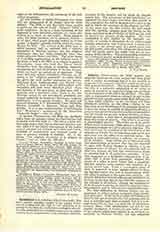

Installation (Lat. installare, to put into a stall). This word, strictly speaking, applies to the solemn induction of a canon into the stall or seat which he is to occupy in the choir of a cathedral or collegiate church. It is the symbolical act (institutio corporalis) by which a canon is put in possession of the functions which he exercises in the chapter, and by which the chapter admits him. The ceremonies of this installation are regulated by local usage; very often they consist in the assignment of a stall in the choir and a place in the hall in which the meetings of the chapter are held. At the same time the dean invests the new canon with the capitular insignia, puts the biretta on his head, and receives his profession of faith and his oath to observe the statutes of the chapter. The term installation is also applied to the institutio corporalis, or putting in possession of any ecclesiastical benefice whatsoever (see Canonical Institution); or, again, to the solemn entry of a parish priest into his new parish, even when this solemn act takes place after the parish priest has really been put in possession of his benefice. The corresponding ceremony for a bishop is known as Enthronization (q.v.).
A. VAN HOVE

